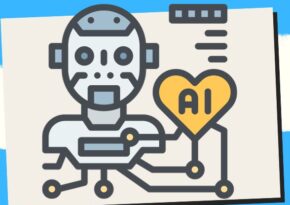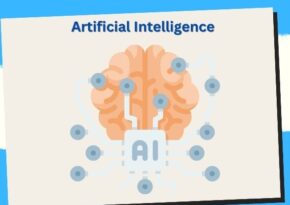
⚖️ Tackling Algorithmic Bias in AI: Strategies for Fairer Technology!
🌐 Discover how we’re making technology fairer by addressing algorithmic bias in AI. Uncover the methods and innovations that drive our commitment to equitable AI solutions.
⚖️ Tackling Algorithmic Discrimination in AI: A Path to Fairer Technology ⚙️
In our rapidly evolving digital age, Artificial Intelligence (AI) has become an integral part of our lives, influencing everything from the ads we see online to the decisions made by financial institutions. However, as AI systems become more sophisticated, there’s a growing concern about algorithmic discrimination. This article dives deep into the complex issue of addressing algorithmic discrimination in AI, examining its origins, consequences, and potential solutions.
Understanding Algorithmic Discrimination
🤖 What Is Algorithmic Discrimination?
Algorithmic discrimination, often called algorithmic bias or AI bias, occurs when AI systems exhibit unfair or prejudiced behavior toward certain groups of people. This bias can stem from the data used to train the AI, the algorithms themselves, or even the designers and users of the technology. It can manifest in various ways, including unfair lending practices, biased hiring decisions, or discriminatory content recommendations.
🧬 The Roots of Bias
Algorithmic discrimination is not inherent to AI but rather a reflection of the biases present in our society. When AI systems are trained on historical data, they learn not only the patterns and trends but also the biases and prejudices encoded in that data. This can perpetuate existing inequalities and reinforce stereotypes.
Consequences of Algorithmic Discrimination
🌍 The Wider Impact
- Reinforcing Inequalities: Algorithmic discrimination can perpetuate existing inequalities, making it harder for marginalized groups to access opportunities or resources.
- Undermining Trust: As instances of bias in AI come to light, it erodes trust in technology and the institutions that use it, potentially slowing down the adoption of AI in critical areas.
- Legal and Ethical Concerns: Discrimination in AI can lead to legal and ethical challenges, with regulatory bodies scrutinizing algorithms for fairness and transparency.
- Economic Disparities: Unfair AI systems can exacerbate economic disparities by limiting access to jobs, loans, and educational opportunities.
Solutions to Address Algorithmic Discrimination
🔧 The Road to Fairer AI
Addressing algorithmic discrimination is a multi-faceted challenge that requires a combination of technological innovation, regulatory frameworks, and societal awareness. Here are some key strategies to tackle this issue:
- Diverse and Inclusive Data: To mitigate bias in AI, datasets used for training must be diverse, representative, and inclusive of all demographics. Efforts should be made to collect and curate data that accurately reflects the real world.
- Bias Detection and Mitigation: Developing tools and methodologies to detect and mitigate bias in AI algorithms is crucial. This involves monitoring AI systems for discriminatory behavior and making necessary adjustments.
- Transparency and Explainability: AI systems should be designed to be transparent and explainable. Users should have insight into how decisions are made, and designers should be able to trace the algorithm’s reasoning.
- Ethical Guidelines: AI developers and organizations should adopt ethical guidelines prioritizing fairness and non-discrimination. These guidelines should be integrated into the design and deployment of AI systems.
- Diverse Teams: Creating diverse teams of designers, engineers, and data scientists can help reduce bias in AI development. Diverse perspectives can lead to more comprehensive and inclusive AI solutions.
- Regulatory Frameworks: Governments and regulatory bodies should establish frameworks that hold organizations accountable for discriminatory AI practices. These frameworks should include guidelines for transparency and fairness assessments.
- Education and Awareness: Promoting awareness about algorithmic discrimination is vital. This includes educating the public about AI’s work, its potential biases, and the importance of ethical AI use.
Real-World Applications
🌐 Fighting Discrimination with AI
- Fair Lending: AI models can be used to ensure fair lending practices by assessing loan applications without bias, considering only relevant financial factors.
- Hiring Decisions: AI can analyze job applications and conduct interviews, focusing solely on qualifications and skills rather than gender, ethnicity, or age.
- Content Moderation: AI algorithms can help social media platforms detect and remove hate speech and discriminatory content, promoting a safer online environment.
- Healthcare Equity: AI can be used to ensure equitable healthcare by improving diagnostic accuracy across diverse patient populations.
- Criminal Justice Reform: AI tools can reduce biases in sentencing and parole decisions, leading to a fairer criminal justice system.
Conclusion
Addressing algorithmic discrimination in AI is a critical step toward building a more equitable and just society. While AI has the potential to revolutionize industries and improve our lives, it also poses risks if not properly managed. By taking proactive measures such as diverse data collection, bias detection, and regulatory oversight, we can harness the power of AI while minimizing its potential for harm.
The road to fairer AI is long and challenging, but it is a journey worth embarking on. As technology advances, so must our commitment to ensuring that AI serves the best interests of all, regardless of their background or identity. Through collaboration between technologists, policymakers, and society, we can pave the way for a future where algorithmic discrimination is a relic of the past and technology truly becomes a force for good. ⚖️🌐⚙️
Related Queries
⚖️ Tackling Algorithmic Bias in AI: Strategies for Fairer Technology!
👥 Fighting AI Discrimination: Our Mission Against Algorithmic Bias.
🤖 Confronting Algorithmic Discrimination in AI: A Critical Analysis.
🌐 The Battle Against AI Bias: How We’re Making Technology Fairer!
🚫 Unmasking Algorithmic Discrimination in AI: What You Need to Know.
🔍 Exposing AI Bias: The Fight for Ethical and Inclusive Algorithms.
🌟 Championing Fair AI: Our Commitment to Combat Algorithmic Discrimination.
🤯 The Hidden Dangers of AI Bias: Unraveling Algorithmic Discrimination.
🌈 Towards Inclusive AI: Strategies to Eradicate Algorithmic Discrimination.
💡 Demystifying Algorithmic Bias: Your Guide to Ethical AI.
Save/Share this story with QR CODE
Disclaimer
This article is for informational purposes only and does not constitute endorsement of any specific technologies or methodologies and financial advice or endorsement of any specific products or services.
📩 Need to get in touch?
Feel free to Email Us for comments, suggestions, reviews, or anything else.
We appreciate your reading. 😊Simple Ways To Say Thanks & Support Us:
1.) ❤️GIVE A TIP. Send a small donation thru Paypal😊❤️
Your DONATION will be used to fund and maintain NEXTGENDAY.com
Subscribers in the Philippines can make donations to mobile number 0917 906 3081, thru GCash.
3.) 🛒 BUY or SIGN UP to our AFFILIATE PARTNERS.
4.) 👍 Give this news article a THUMBS UP, and Leave a Comment (at Least Five Words).
AFFILIATE PARTNERS

World Class Nutritional Supplements - Buy Highest Quality Products, Purest Most Healthy Ingredients, Direct to your Door! Up to 90% OFF.
Join LiveGood Today - A company created to satisfy the world's most demanding leaders and entrepreneurs, with the best compensation plan today.



 Business Technology, Finance Technology & Information Technology
Business Technology, Finance Technology & Information Technology





